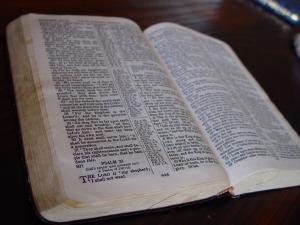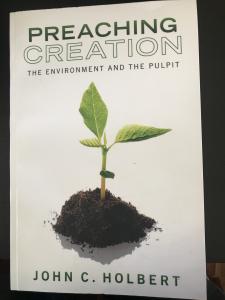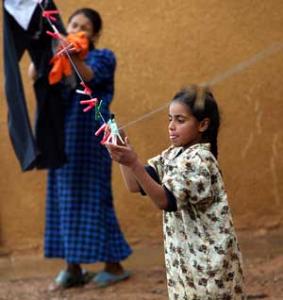 In December of 1997, I went with a small group of religious journalists to Israel and Jordan. It was a vastly different trip than my earlier visits to the region, since we went as far more than mere tourists. We were anxious to see parts of the Holy land that many tourists never see. My two former trips—January, 1978 and May, 1983—had focused on the usual sites one expects to encounter when in Israel and Jordan. Those of you who have been in that beautiful and contentious place know the ones I mean: the Sea of Galilee, the Temple Mount, the Way of the Cross in the Old City, the Church of the Holy Sepulcher and its quite phony counterpart, the Garden Tomb, the Dead Sea, among others. But this, my third trip, went to places I had not seen before, places I desperately needed to see.
In December of 1997, I went with a small group of religious journalists to Israel and Jordan. It was a vastly different trip than my earlier visits to the region, since we went as far more than mere tourists. We were anxious to see parts of the Holy land that many tourists never see. My two former trips—January, 1978 and May, 1983—had focused on the usual sites one expects to encounter when in Israel and Jordan. Those of you who have been in that beautiful and contentious place know the ones I mean: the Sea of Galilee, the Temple Mount, the Way of the Cross in the Old City, the Church of the Holy Sepulcher and its quite phony counterpart, the Garden Tomb, the Dead Sea, among others. But this, my third trip, went to places I had not seen before, places I desperately needed to see.
Among those places was the sprawling Palestinian refugee camp called Duheishe. The name itself is contentious, and at least six other English transliterated spellings are in use. I use the one preferred by those Palestinians who actually live in the camp, though few of them care much since not much English is spoken there. The site was first created as a Palestinian camp in 1949, as one of the spots where the thousands of displaced persons were housed after the creation of the nation of Israel in 1948. On barely .3 kilometers of rocky soil right next to a road in Bethlehem, some 3,000 refugees were housed. When I visited, about 13,000 persons still lived in the camp that had been expanded to about 1 kilometer square; that is a bit more than .6 square miles.. As our bus drove up to the camp, we saw the one (!) gate that allowed entrance and exit from the camp. It was an iron bar revolving gate, set into a tall iron chain link fence about 10 feet high that completely surrounded the camp. In 1995, the Israeli government had given control of the camp to the Palestinians, but the Israelis had conducted numerous raids into the camp from time to time, especially after the Intifadas of 1987-1993 and 2000-2005, jailing many of the older adults and harassing the inhabitants in subtle and unsubtle ways.
The fence has since been torn down, but the revolving gate is still there as a reminder of darker times. But you must not imagine that those darker times have ended. They have not. Duheishe now has about 15,000 residents, living on perhaps 1.5 kilometers of land, but the sometimes daily abuse of the ruling Israelis continues. Life remains very constricted at Duheishe, and though there are now more social service agencies active there, and though some of the streets are now paved, rather than the dirt paths I saw, genuine freedom is still a distant hope.
The camp is not far from the Church of the Nativity, that revered site where Jesus is said to have been born. That Jesus, himself a refugee from the Herodian threat of genocide, the one harassed and murdered by a government threatened by his willingness to speak truth to power, stands as a witness to Duheishe, where refugees are harassed and abused and corralled by a government similarly threatened in our own time. In a later trip to Israel, I saw that monstrous wall—in places 50 feet high—that cuts off so many Palestinians from Israelis, a wall designed to prevent terrorism, but a wall that I fear rather foments it. Oh, yes, the Israelis often say that terrorist incidents have decreased dramatically since the erection of the wall, and so they have, but the silent resentments and more public fury at the wall’s separation of the people continue to mount. Even 20 years ago at Duheishe I heard that resentment voiced and that fury barely suppressed, all before the terrible wall was built.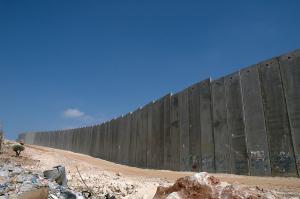
Here at Duheishe I saw an Israel that few tourists see. Israeli guides, well- schooled in their craft, offer tourists a sanitized view of the Holy Land, a land of courage and grit, a land carved out by intrepid Israeli settlers who farmed the rich soil of the north on kibbutzim and created a green oasis in the deserts of the Middle East, who mined the potash of the Dead Sea to create a thriving industry of road-building resources, who withstood wave after wave of Arab enemies in a series of wars to make of themselves a powerful and resilient nation. It is a tale that Americans especially find richly appealing, because it reminds them of their own mythical story, where settlers moved west to ”tame” a land for courageous people and to create a powerful and generous land, the envy of the world.
What of course is missing from those tales is the people who lived in the land before the coming of the conquerors. In our case, it was the Native Americans who were slaughtered in the thousands, the survivors of the genocide herded into reservations of poor land. American settlers did not “tame” the land so much as cleanse it of those pesky peoples who had lived there for centuries. And so it was in Israel. The plucky Israelis did not so much create a nation out of a forbidding wilderness, but rather formed a country by shoving the long-existent Palestinians aside to do so. And Duheishe is merely one example of that terrible process. As the dream of a Palestinian state aside an Israeli one continues to fade, Duheisha is itself a witness to Israeli power and Israeli blindness.
And so here we are in 2018. President Donald Trump has unilaterally decided to move the US embassy to Jerusalem as a sign that Jerusalem alone can be the capital of a Jewish state, despite the ancient cries of the Palestinians that Jerusalem must be their capital, too. And President Trump has cozied up to the current Israeli strongman, Benjamin Netanyahu, who has in word and deed poured cold water on any serious peace talks that might lead to a two-state solution to that troubled land. And Duheishe still stands as a beacon of displaced Palestinians who yearn for freedom and independence in a country of their own.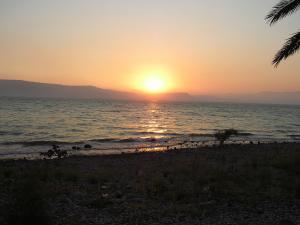
I was very glad to have visited Duheisha, and at the same time deeply troubled and angered by what I saw. And now 20 years have passed, and the camp is still there. It is larger, and its walls are gone, but it is still there. And Jesus, the refugee, still cries for the land of his birth. “Would that you knew the ways of peace,” he wept, “but you would not.” Would that we knew the ways of peace, we blind Americans, reveling in the beauties of Galilee and the sacredness of Jerusalem, but unwilling to see Duheishe and its suffering people. On your next trip to the Holy Land, insist that you and your fellow pilgrims see that land in all of its rich and terrible complexity. Visit Duheishe, if you can. I know that that visit will give you more than you imagined and might help you to see how crucial it is to see Israel in all its ironic and terrifying wonders.
(Images from Wikimedia Commons)



